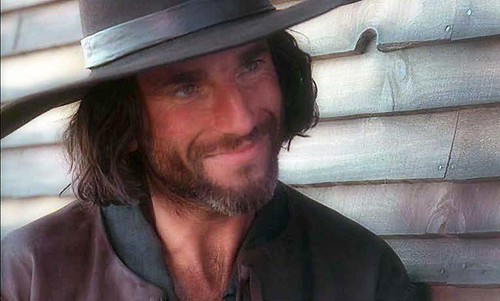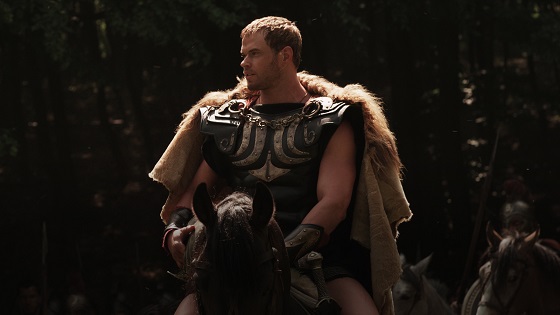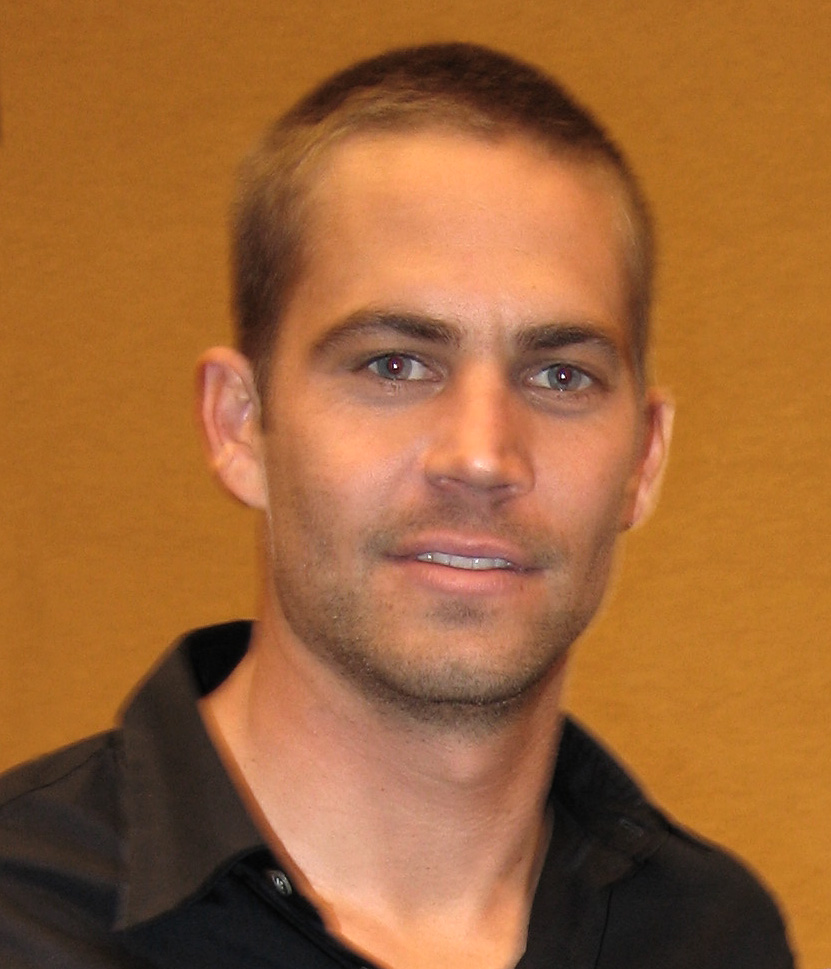
The allure of cinema lies not just in its dazzling stories, but in the mesmerizing transformations actors undertake to bring characters to life. Audiences are constantly captivated by the emotional depth and raw authenticity displayed on screen, often left to wonder about the intricate process behind such powerful portrayals. A particularly intriguing aspect that sparks much curiosity is how actors navigate intense love scenes, portraying passion and romance with such conviction, all while maintaining the professional boundaries necessary to avoid genuinely falling in love.
Yet, the true craft of acting often demands far more than just memorizing lines or hitting marks. It requires venturing into a vast emotional landscape, where actors must tap into a wide spectrum of feelings, from profound joy and exhilarating love to deep sorrow and searing anger. Some roles, in particular, demand a level of emotional vulnerability and authenticity that pushes actors to channel their own experiences, blurring the lines between their personal realities and their characters’ journeys.
While we, as viewers, often celebrate the glamour and accolades that come with a standout performance, we rarely get a true glimpse of the emotional, psychological, and even physical toll these immersive experiences can take on the actor behind the character. In this article, we delve into the human stories of 12 extraordinary actors who dedicated themselves so deeply to their craft that they carried their characters’ burdens and complexities long after the cameras stopped rolling, leading to unforeseen personal struggles and profound shifts in their own lives.

1. **Heath Ledger – The Joker**His portrayal of The Joker in Christopher Nolan’s “The Dark Knight” wasn’t merely a performance; it was a phenomenon, a chillingly real embodiment of chaos that redefined cinematic villainy. Ledger’s take on the iconic antagonist was so utterly transformative and unsettling that it left an indelible mark on cinematic history, earning him posthumous accolades and the awe of audiences worldwide. Yet, behind this legendary performance lay a profound personal journey into the character’s psyche, one that would extract a heavy toll on the actor.
To fully inhabit the role of Gotham’s most unpredictable antagonist, Ledger embraced an immersive method that pushed the boundaries of conventional acting. He famously isolated himself for six weeks in a hotel room, meticulously developing every nuance of the character, from his unsettling vocal inflections to his erratic mannerisms. This intense period of solitude was a deep dive into madness, a deliberate act to construct a villain unlike any seen before, stripping away his own identity to become a true force of anarchy.
During this profound immersion, Ledger diligently maintained a “Joker diary,” a chilling journal where he would jot down the character’s dark thoughts and twisted ideas. This practice, while instrumental in crafting such an authentic and disturbing villain, inevitably began to blur the lines between Heath Ledger, the actor, and his on-screen alter ego. It pulled him deeper into the character’s unsettling world, making it increasingly difficult to disengage from the psychological intensity.
Sadly, the relentless commitment to this role had significant and tragic consequences on Ledger’s personal well-being. He openly confessed to experiencing severe sleep deprivation, struggling to sleep for barely two hours a night throughout the demanding filming schedule. This extreme exhaustion led him to rely on prescription medications, including sleeping pills such as Ambien, which, as the context states, “unfortunately contributed to his untimely death on January 22, 2008, at the age of 28.” His story stands as a stark reminder of the immense personal cost some actors pay for their art.
Read more about: A Heartbreaking Tribute: Remembering 14 Gen X Movie Stars We Lost Far Too Soon

2. **Adrien Brody – Władysław Szpilman**Adrien Brody’s portrayal of Władysław Szpilman in the 2002 film “The Pianist” is renowned for its sheer intensity and stark realism. To authentically depict Szpilman, a Holocaust survivor who endured unimaginable suffering, Brody understood that a superficial approach would not suffice. His dedication to this role went far beyond the typical preparation, aiming to truly embody the desperation and profound disconnection his character felt during World War II.
Brody’s immersion tactics were extreme and deeply personal. He isolated himself from his family and friends, severing connections to experience a profound sense of loneliness. In a drastic move to mirror his character’s plight, he sold his car and moved to Europe, shedding the comforts of his familiar life. Additionally, he underwent a harrowing physical transformation, losing 30 pounds to match the malnourished state of Szpilman, a testament to his unwavering commitment to authenticity.
This intense method, while yielding an Academy Award-winning performance, exacted a heavy toll on Brody’s emotional state. In interviews, he described experiencing deep loneliness and despair not only during filming but lingering long afterward. The psychological weight of the role was immense, leaving him profoundly affected by the horrors he had to channel.
He further revealed in a BBC interview that it took him months to re-establish his sense of normalcy. The intensity of Szpilman’s trauma meant Brody struggled with depression, grappling with the echoes of his character’s suffering. His experience highlights the profound emotional scars that can be left when an actor fully inhabits a character steeped in such immense historical tragedy and personal pain.
Read more about: Not Even Trying: 14 Times Actors Unforgettably Became Their Characters Through Unique Personalities and Extreme Immersion

3. **Daniel Day-Lewis – Christy Brown**Daniel Day-Lewis is legendary for his meticulous, immersive approach to acting, and his portrayal of Christy Brown in the 1989 film “My Left Foot” is considered one of cinema’s most compelling performances. Brown, an Irish writer and painter born with cerebral palsy, could only control the movements of his left foot. Day-Lewis’s commitment to accurately represent Brown’s unique challenges and spirit was absolute.
To authentically step into Brown’s world, Day-Lewis embarked on months of rigorous research, delving into Brown’s life and condition with an unwavering focus. He didn’t just study; he actively embodied, even learning to write and paint with his left foot to understand the physical reality of his character. This level of dedication illustrates his profound respect for the real-life individual he was portraying.
His commitment didn’t stop when the cameras did. Throughout the entire filming process, Day-Lewis famously remained in his character’s hunched position, both on and off the set. This meant living, eating, and interacting with others while maintaining the physical posture of Christy Brown, an extraordinary feat of physical endurance and mental discipline.
However, this extraordinary dedication came with a significant physical cost. Maintaining such an unnatural posture for prolonged periods, day in and day out, led to severe consequences for the actor. The context reveals that this unwavering commitment resulted in “two broken ribs,” a direct and painful testament to the physical extremes Day-Lewis was willing to endure to achieve absolute authenticity in his performance.
Read more about: Chameleons of the Silver Screen: Unpacking the Unparalleled Versatility of 14 Iconic Actors Across Genres

4. **Jared Leto – The Joker**Jared Leto’s depiction of The Joker in “Suicide Squad” (2016) is frequently cited as one of the most extreme examples of an actor being deeply affected by their character, showcasing a willingness to delve into the dark corners of a persona. His approach to embodying the iconic villain was not just about understanding the character’s psychology but living it in a way that impacted those around him.
To fully embody the chaotic and unhinged nature of The Joker, Leto reportedly engaged in highly unconventional, and some might say disturbing, methods. He famously sent unusual and unsettling “gifts” to his co-stars, including live rats and a dead pig. These actions, far from being mere pranks, were a clear manifestation of how deeply he immersed himself in the role, attempting to cultivate the Joker’s unpredictable and menacing presence both on and off screen.
This intense, immersive character commitment undeniably took a significant psychological toll. Leto himself articulated the profound impact of this deep dive into madness. In an article in The Hollywood Reporter, he stated, “There was a lot of madness. Every day it felt like treading the line between reality and another world.”
His words reveal the profound struggle of maintaining a clear sense of self amidst the overwhelming influence of such a dark and erratic character. Leto’s journey into The Joker’s mind became a constant battle to distinguish between his own identity and the persona he so completely adopted, leaving him grappling with the psychological echoes of chaos long after filming concluded.
Read more about: The Unforgettable Moments: 11 Stars Who Exploded the Internet with a Single Photo, and the Wild Rides That Followed!

5. **Shia LaBeouf – Jake Mazursky**Shia LaBeouf’s portrayal of Jake Mazursky in the 2006 film “Alpha Dog” serves as a powerful illustration of how deeply a role can impact an actor’s personal life. Playing a troubled, drug-infused character based on the real-life murder victim Nicholas Markowitz, LaBeouf was tasked with exploring a deeply disturbing and painful reality, which required a significant personal plunge into darkness.
LaBeouf dove deep into the unsettling world of Mazursky, immersing himself in the grim themes of violence and gang culture depicted in the film. This wasn’t merely acting; it was an exploration of human depravity and vulnerability that demanded a profound emotional engagement. The intensity of the subject matter and the character’s tortured existence began to bleed into his own reality.
In his memoir, “The Method to My Madness,” LaBeouf candidly discusses how his personal life spiraled during the filming of “Alpha Dog.” The boundaries between his character’s troubled existence and his own began to blur, leading to a period of significant personal upheaval. This role clearly resonated with an intensity that destabilized his personal equilibrium.
During this time, he resorted to heavy drinking and engaged in erratic behavior, actions that sadly contributed to a growing list of off-screen controversies in his public life. LaBeouf’s experience with Jake Mazursky underscores the perilous line actors walk when they commit to roles that demand such profound emotional and psychological immersion, highlighting the risk of personal turmoil when portraying such dark facets of humanity.
Read more about: More Than a Role: 11 Actors Who Brought Their Real-Life Pain to the Big Screen

6. **Leonardo DiCaprio – Hugh Glass**Leonardo DiCaprio’s portrayal of the frontiersman Hugh Glass in “The Revenant” is widely acclaimed, a physically grueling and emotionally raw performance that finally earned him his first Academy Award for Best Actor. The film, set in the unforgiving Canadian wilderness, demanded an extraordinary level of endurance and commitment, pushing DiCaprio to his absolute limits both physically and mentally.
Filming under truly harsh conditions, DiCaprio faced freezing temperatures, grueling physical exertion, and an incredibly demanding shooting schedule. This was not a comfortable set experience; it was a battle against the elements and human endurance. The intense environmental challenges and relentless pace of production reportedly took a significant toll on his overall well-being.
DiCaprio has vividly recounted the hardships of filming “The Revenant,” describing instances that few actors would willingly undertake. He recalled having to step into a carcass, eat raw bison liver, and endure the frigid waters of a river, all in the name of authenticity. These were not mere scenes but harrowing experiences that immersed him completely in the brutal struggle for survival his character faced.
In an interview with Wired, DiCaprio plainly stated the profound impact of these challenges, recalling, “I can name 30 or 40 sequences that were some of the most difficult things I’ve ever had to do.” This candid admission perfectly encapsulates the sheer physical and mental fortitude required for the role, demonstrating how his deep devotion to embodying Hugh Glass pushed him to the brink and left an indelible mark on his professional and personal journey.
Read more about: Not Even Trying: 14 Times Actors Unforgettably Became Their Characters Through Unique Personalities and Extreme Immersion

7. **Charlize Theron – Aileen Wuornos**Charlize Theron’s transformative portrayal of Aileen Wuornos in the 2003 film “Monster” wasn’t just a career highlight; it was a profound journey into the psyche of a deeply troubled individual. This role, which earned her an Academy Award for Best Actress, demanded an extraordinary level of commitment, pushing Theron to embody the infamous serial killer with chilling authenticity. It wasn’t just about acting; it was about becoming.
To truly inhabit Wuornos, Theron underwent a significant physical metamorphosis, gaining 30 pounds and drastically altering her appearance to mirror the real-life figure. This physical change was accompanied by months of intense research, where Theron immersed herself in Wuornos’s life story. She meticulously studied court documents, watched interviews, and even engaged with individuals who knew Wuornos personally, seeking to understand the traumatic life and mindset that shaped her character.
This deep dive into Wuornos’s world, however, came at a considerable emotional cost. Theron candidly shared in an interview with The New York Times that depicting Wuornos’s traumatic life and mindset haunted her. The actor disclosed that the role led to “nightmares and profound sadness,” demonstrating the lingering psychological impact of channeling such a dark and complex character. The lines between empathy and experience blurred, leaving a lasting impression.
Theron’s dedication to this role exemplifies the profound responsibility actors undertake when portraying real individuals, especially those with such tragic histories. Her ability to translate deep research into such a raw and acclaimed performance speaks volumes about her craft, while also serving as a poignant reminder of the emotional weight carried by those who dare to step into such challenging shoes.
Read more about: Get Ready to Feel It All: 14 Stars Who Delivered the Most Powerful Emotional Performances in Film and TV

8. **Jim Carrey – Andy Kaufman**Jim Carrey’s performance as the eccentric comedian Andy Kaufman in “Man on the Moon” wasn’t merely an impersonation; it was a complete, all-consuming immersion that transcended the conventional boundaries of acting. Carrey didn’t just play Kaufman; he became him, adopting Kaufman’s distinctive mannerisms, speech patterns, and even his often confrontational persona, both on and off the set, for the entire duration of the shoot.
This intense method acting approach, famously termed “immersive character commitment,” meant that Carrey remained in character throughout filming, a demanding feat that caused significant emotional and psychological strain. He was, in essence, living as Andy Kaufman, a choice that undoubtedly enriched his performance but exacted a heavy personal toll, blurring the distinction between actor and subject.
The profound impact of this experience was vividly documented in the Netflix featurette “Jim & Andy: The Great Beyond.” In it, Carrey eloquently described the experience as “losing himself,” articulating a profound sense that Kaufman had, in some inexplicable way, “taken over his body and mind.” This wasn’t just a role; it was an existential shift that challenged his own sense of identity.
The documentary showcases behind-the-scenes footage that captures Carrey’s extreme commitment, revealing moments where he behaved unpredictably and tested the patience of his colleagues, much like Kaufman himself might have. This unflinching portrayal of his dedication highlights the perilous tightrope actors walk when they fully commit to a role, sacrificing their own persona to embody another with such intensity.
Read more about: Not Even Trying: 14 Times Actors Unforgettably Became Their Characters Through Unique Personalities and Extreme Immersion

9. **Natalie Portman – Nina Sayers**Natalie Portman’s Academy Award-winning portrayal of Nina Sayers in Darren Aronofsky’s psychological thriller “Black Swan” was a masterclass in dedication, but it came at a significant personal cost. To convincingly embody the driven, mentally unstable ballerina, Portman undertook a physical and mental transformation that pushed her to her absolute limits, immersing herself entirely in Nina’s fragile world.
Her preparation involved an intense ballet training regimen, lasting up to eight hours a day over several months. This grueling physical commitment led to significant weight loss, with Portman reportedly shedding up to 20 pounds, and tragically, she sustained serious injuries, including a dislocated rib, all in the pursuit of authentic representation of a professional dancer’s demanding life. The physical toll was immense.
Beyond the physical, the role demanded an equally intense psychological immersion. Portman admitted that embodying Nina Sayers—a character who spirals into obsession, delusion, and self-destruction—was profoundly mentally exhausting. In a conversation with EW, she openly discussed how the intense nature of Nina’s psychological battles left her feeling “like she was in a state of near-constant anxiety” throughout the entire filming period.
This deep dive into Nina’s tormented mind meant that Portman carried the character’s anxieties and obsessions long after the cameras stopped rolling. Her experience underscores the delicate balance actors must strike, showcasing how the pursuit of artistic excellence can, at times, come hand-in-hand with profound personal strain, leaving an indelible mark on the performer.
Read more about: Not Even Trying: 14 Times Actors Unforgettably Became Their Characters Through Unique Personalities and Extreme Immersion

10. **Robert De Niro – Travis Bickle**Robert De Niro’s iconic portrayal of Travis Bickle in Martin Scorsese’s 1976 classic “Taxi Driver” remains one of cinema’s most compelling and disturbing performances. To truly inhabit the mind of this mentally unstable Vietnam War veteran turned taxi driver, De Niro engaged in an astonishing level of method acting, pushing himself to extreme lengths to understand Bickle’s isolation and disillusionment.
His immersion tactics were legendary. De Niro famously obtained a taxi driver’s license and, for several weeks, reportedly worked 12-hour shifts driving cabs in New York City. This wasn’t a superficial observation; it was a deep dive into the monotonous, gritty reality of Bickle’s life, allowing De Niro to internalize the character’s profound sense of detachment and his observations of urban decay.
Furthermore, according to Peter Biskind’s insightful book “Easy Riders, Raging Bulls,” De Niro undertook a significant physical transformation. He lost approximately 35 pounds to embody Bickle’s gaunt, isolated figure, meticulously crafting a visual representation of the character’s internal desolation. This physical sacrifice underscored his unwavering commitment to authenticity.
The dedication to Travis Bickle’s psychological solitude and physical manifestation left an enduring impact on De Niro. It’s a testament to his rigorous approach that the character felt so unsettlingly real, a powerful example of how an actor can fully merge with a role, even one steeped in such profound psychological turmoil, to create an unforgettable cinematic legend.
Read more about: 14 Child Actors Who Absolutely Stole the Show and Left Adults in Their Dust!

11. **Shelley Duvall – Wendy Torrance**Shelley Duvall’s experience portraying Wendy Torrance in Stanley Kubrick’s 1980 horror classic, “The Shining,” stands as a stark and distressing example of a role leading to lasting psychological distress for an actor. Unlike typical challenging roles, Duvall’s involvement was marked by a relentless and, by many accounts, abusive directing style from Kubrick, which pushed her to the brink.
Kubrick was notorious for his meticulous and demanding approach, which, in Duvall’s case, manifested as constant pressure and an extraordinary number of retakes. The context reveals that Duvall endured an astonishing 127 takes for the infamous “Here’s Johnny!” scene, a grueling process that left her both physically and mentally exhausted, mirroring the terror her character felt on screen.
Duvall openly disclosed that she suffered from extreme stress throughout the arduous filming process, which culminated in a visible physical toll: her hair began “falling out in clumps.” This harrowing experience was not just a performance; it was a prolonged period of intense emotional and psychological strain that blurred the lines between acting and genuine torment.
Years later, Duvall’s struggles remained evident, tragically highlighted by her highly publicized appearance on Dr. Phil in 2016. This public moment revealed the enduring impact of her experiences, demonstrating the long-term, devastating effects that her role in “The Shining” had on her mental health and personal well-being, a chilling testament to the sacrifices some actors make for their art.
Read more about: Beyond the Bell Bottoms: Unpacking the Fates of Hollywood’s Most Iconic 1970s Stars – Where Are They Now?

12. **Joaquin Phoenix – Arthur Fleck**Joaquin Phoenix’s portrayal of Arthur Fleck in “Joker” is nothing short of transformative, a breathtaking descent into madness that redefined cinematic villainy and earned him an Academy Award for Best Actor. Known for his meticulous approach to character, Phoenix immersed himself profoundly in the role of the troubled comedian turned criminal mastermind, embodying every facet of Fleck’s isolation and despair.
The physical transformation Phoenix undertook was particularly striking and critical to his performance. He lost an alarming 52 pounds to accurately depict Fleck’s gaunt, starved appearance, a physical manifestation of the character’s mental and emotional decay. This commitment to the physical reality of Fleck’s suffering immediately signals the depth of Phoenix’s dedication.
Beyond the physical, the emotional toll was immense. Phoenix himself reported experiencing periods of “intense loneliness and suffering,” directly mirroring the character’s profound isolation and despair. His method acting approach demanded that he explore the very depths of human suffering, an experience that lingered and affected him well beyond the film’s wrap date, resonating deeply within his own psyche.
Phoenix’s performance is a poignant reminder of the personal sacrifices involved in embodying such complex and tormented characters. His journey into Arthur Fleck’s mind created a powerful and unforgettable cinematic experience, showcasing the intense mental and emotional fortitude required to bring such a deeply unsettling and vulnerable character to life, leaving audiences to ponder the true cost of genius.
Read more about: Chameleons of the Silver Screen: Unpacking the Unparalleled Versatility of 14 Iconic Actors Across Genres
As we’ve journeyed through these profound transformations, it becomes clear that for these exceptional actors, the craft is far more than a profession; it’s a calling that demands every fiber of their being. Their willingness to venture into the deepest recesses of human experience, to physically and psychologically inhabit roles that push them to their limits, is a testament to their unwavering dedication. While the glamour of Hollywood often overshadows the personal struggles, these stories remind us of the immense emotional, psychological, and physical price paid for the art of true cinematic immersion. It’s a delicate balance, an intricate dance between self and character, that leaves an indelible mark, not just on the screen, but on the very soul of the performer.



